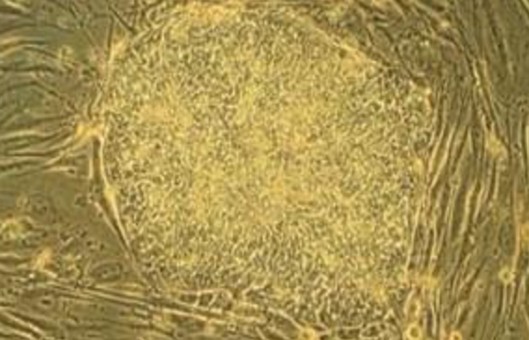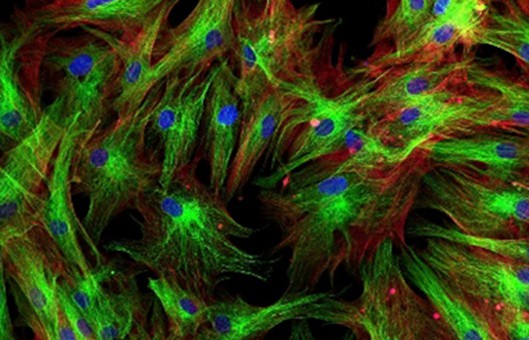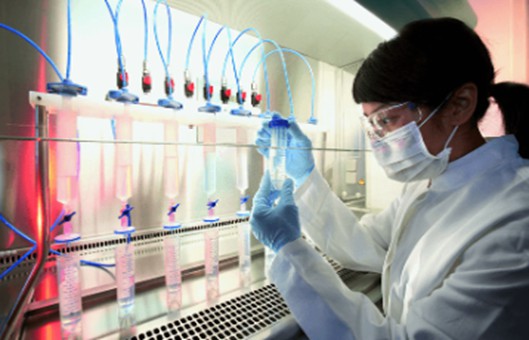Cell Passage Protocol
GUIDELINE
- Cell subculture is one of the conventional methods of cell culture, when cells with the extension of culture time and cell division, cells contact with each other and contact occurs, growth rate slows down or even stops, and will also be due to insufficient nutrients and metabolite accumulation is not conducive to cell growth or poisoning. Therefore, once the cells are overgrown in the flask, they need to be diluted and seeded into multiple vials before the cells can continue to grow. This process is called passage.
- As a routine experimental operation, cell passage can not only expand the number of cell cultures, but also avoid the dilemma of a large number of cells dying due to plateau or even decay. Therefore, in order to keep the cells in the logarithmic growth phase and maintain the cell's vigorous division ability, cell passage is required at this time.
- Cell passage is performed under strict sterile conditions and different methods are taken for each cell.
METHODS
Cell passage preparation: Before the start of the experiment, 15 mL of consumables such as centrifuge tubes, pipettes, and tips required for the experiment are put into a sterile ultra-clean table. The morphology and growth density of the cells are observed under a microscope, and passage could be performed when the cell growth density reached 80% to 90% confluence.
Digestion method
EDTA digestion method
- Discard the original culture medium, wash the remaining original culture medium with PBS, and repeat the washing twice. PBS is discarded, EDTA (about 1.5 mL for T25 flask and about 3 mL for T75 flask) is added and rapidly diffused to ensure adequate contact with the cell surface (digestion time depends on the specific cell).
- When approximately 70% to 80% of the cells are observed to shrink and become round, tap the outer wall of the culture vessel to separate the cells from the culture surface. By using a pipette, gently blow the bottom of the culture flask several times to blow down as many cells as possible.
- All cell suspensions are taken and centrifuged in sterile centrifuge tubes. The supernatant is removed and then the precipitate is washed twice each time with 1 mL of PBS.
- Finally, 1mL of complete culture medium is used to suspend the cells for precipitation. They are divided into two culture flasks and then supplemented with the required culture medium.
Trypsin digestion method
- The original culture medium in the culture flask in which the cells grow into a dense monolayer is discarded. 0.25% trypsin solution is added in a volume of 0.5 mL or more depending on the size of the culture flask to allow adequate cell infiltration.
- The general digestion time is about 1 to 3 minutes. As the bottle goes from translucent (cell monolayer connected sheet) to punctate transparent (tiny gaps appear), digestion is terminated by immediately adding 2-fold amount of trypsin complete culture medium. And gently shake the culture vessel to allow rapid mixing of culture medium and trypsin.
- By using a pipette, gently blow the bottom of the culture flask several times to blow down as many cells as possible.
- All cell suspensions are taken and centrifuged in sterile centrifuge tubes. The supernatant is discarded, 1 mL of complete culture medium is added to mix the cell mass. The mixture is transferred to more than two new bottles and finally supplemented with the required culture medium for the different bottles.
- Finally, the cells are observed under a microscope and cultured in a cell culture incubator.
Direct blowing centrifugation method
- Observe cell morphology and number under a microscope.
- For cells that do not adhere tightly, the cells are generally blown off the culture flask without digestion.
- The original culture medium is carefully removed. 1 mL of PBS is added and the flask is gently shaken to make complete contact between the PBS and the cells. The cells are separated from the bottom of the flask by tapping the flask or gently blowing the bottom of the flask with PBS in the suction flask.
- For suspended cells, the medium in the culture flask is aspirated directly into the centrifuge tube along with the cells. Centrifugation is performed, followed by removal of the supernatant. 1 mL of fresh culture medium is added. Mix evenly, transfer them to the culture flask, and supplement with the required culture medium.
- Finally, cells are observed under a microscope and cultured in a cell incubator.
NOTES
- You can't add PBS directly to the cells, and it's easy to blow up the cells. The purpose of this step is to remove the residual culture medium. The residual culture medium will contain serum and some ions, which is not conducive to subsequent digestion.
- The action of blowing should not be vigorous to avoid generating a large number of bubbles, otherwise it may cause damage and loss of cells.
- Aseptic operation throughout.
- Do not passage the cells too sparsely, otherwise the growth of the cells will be affected.


